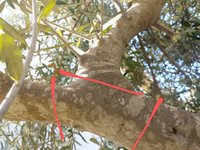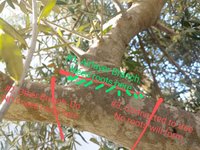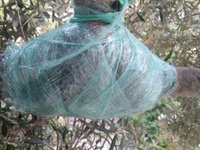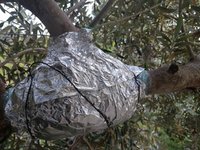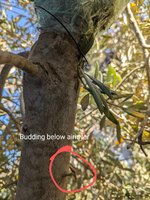Bonsilot
Seedling
I'm looking for advice on how to best airlayer a large T shaped branch on a European Olive (see photos). Questions below. Any tips or info on how long it will likely take would be greatly appreciated too.
Here's my current plan:
Make cuts on the branch at the red lines shown in the photos. Scrape off the cambium, apply Clonex rooting gel to cut site, bag it with wet sphagnum Moss, cover that with aluminum foil, and keep it moist for a long as it takes. I'm doing this in the beginning of Summer on the Central Coast of California.
Questions:
- Should I leave more room between the cuts because this is a larger branch (see photos)?
- How long does an airlayer of this size take to root (specifically for an olive).
- Is there anything I'm doing wrong or anything that I should do with a larger airlayer like this?
- Is there anything I can do to increase my success?
Here's my current plan:
Make cuts on the branch at the red lines shown in the photos. Scrape off the cambium, apply Clonex rooting gel to cut site, bag it with wet sphagnum Moss, cover that with aluminum foil, and keep it moist for a long as it takes. I'm doing this in the beginning of Summer on the Central Coast of California.
Questions:
- Should I leave more room between the cuts because this is a larger branch (see photos)?
- How long does an airlayer of this size take to root (specifically for an olive).
- Is there anything I'm doing wrong or anything that I should do with a larger airlayer like this?
- Is there anything I can do to increase my success?

